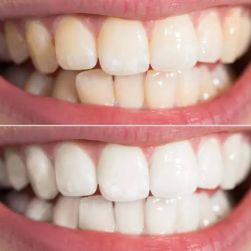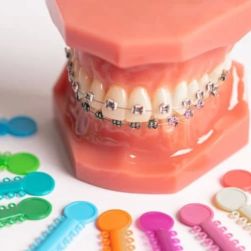How Payment Plans at Dental Offices Can Make Dental Care More Affordable
As a person who’s had my fair share of dental work done over the years, I can personally vouch for the importance of understanding your options when it comes to paying for dental procedures. I remember the first time I faced a large dental bill—it was overwhelming. However, I quickly realized that many dental offices offer payment plans that can help break down those hefty bills into manageable installments. If you’re wondering whether dental offices provide payment plans and how they work, you’re not alone. In this article, I’ll share my insights on payment plans available at dental offices, and how they can help make dental care more affordable.
1. Why Payment Plans Are Crucial for Dental Care
When it comes to dental treatments, costs can quickly add up, especially if you need extensive work done. Whether it’s a root canal, crowns, braces, or cosmetic procedures, the price tag can be quite high. Many people delay necessary dental work simply because they can’t afford the upfront costs. That’s where payment plans come into play. They allow you to receive the dental care you need without having to pay for it all at once.
From my experience, dental payment plans have been a game-changer. Not only do they make treatments more accessible, but they also reduce the financial stress that comes with paying for dental work. Most dental offices understand that cost is a barrier for many people, which is why they offer various options to ease the burden of paying for dental care.
2. How Dental Payment Plans Work
Dental payment plans are essentially financing options that allow you to pay for your dental treatments over time. Depending on the office and the type of treatment, payment plans can vary. Some may offer interest-free options, while others may charge a small interest rate. Payment plans can be set up to fit your budget, with flexible monthly payments that work for you.
From my personal experience, when I had a series of treatments planned, I discussed payment options with my dentist’s office. They were very accommodating and offered me a plan with zero interest for 12 months. This allowed me to spread the cost of the procedures over the course of a year without paying extra. I was able to pay a fixed amount each month, which made it much easier to handle financially.
2.1. Types of Payment Plans
There are a few common types of payment plans offered at dental offices. Here’s a breakdown of what you might encounter:
- In-House Payment Plans: Some dental offices offer their own financing options. This may include an interest-free period or low-interest rates, with monthly payments based on your treatment plan and budget. These are typically short-term plans and can last anywhere from 3 months to a year.
- Third-Party Financing: Many dental offices partner with third-party lenders to offer financing plans. These lenders, such as CareCredit, provide credit lines specifically for healthcare expenses, including dental care. CareCredit and similar programs often offer interest-free periods, with financing terms ranging from 6 months to 2 years.
- Credit Card Payments: Some patients use their credit cards to pay for dental treatments. While this may not be ideal for everyone due to interest rates, it can be a viable option if you can pay off the balance quickly or have a credit card with low-interest rates. Some dental offices even offer the ability to split payments across multiple credit cards.
2.2. Payment Plan Terms and Conditions
When you enter into a payment plan for dental care, it’s important to fully understand the terms and conditions. Some payment plans offer interest-free periods, which can be a huge advantage, but others might include interest or fees depending on the length of the plan. Be sure to ask your dental office about any potential fees, interest rates, and the overall length of the repayment period.
I remember when I was considering my payment options, I was careful to read all the terms and make sure there were no hidden fees or surprise charges. This transparency helped me feel confident in my decision and ensured I wouldn’t face unexpected financial burdens later on.
3. Why Payment Plans Make Dental Care More Accessible
For many people, the cost of dental treatments can be prohibitive, especially when it’s unexpected. Without payment plans, you might be forced to delay treatments, which can lead to more serious issues down the line. I’ve seen friends and family members struggle with this, putting off necessary dental care until a small issue becomes an expensive emergency. Payment plans make it possible to get the care you need when you need it, without putting a strain on your finances.
In my case, having the ability to break down payments made it easier to budget for dental care. I didn’t have to choose between keeping up with my other expenses and getting the treatments I needed. Instead, I was able to pay in smaller increments, which fit seamlessly into my monthly budget.
4. What to Keep in Mind When Choosing a Payment Plan
While payment plans can be a great solution, there are a few things to keep in mind when choosing one. It’s essential to assess your ability to make the monthly payments and to understand how long you’ll be paying off your treatments. Here are some tips to help you make the best decision:
- Interest Rates: Be aware of the interest rates. If the plan offers 0% interest for a specific period, make sure you can pay it off within that time frame to avoid paying additional charges.
- Payment Flexibility: Check how flexible the payments are. Some plans allow you to change the payment schedule if needed, which can be helpful in case of unexpected financial challenges.
- Plan Duration: Consider the length of the plan. A longer payment plan might seem like a good option, but it could end up costing more in interest over time. Choose a plan that balances affordability with a reasonable repayment term.
5. Exploring Other Financing Options for Dental Care
In addition to traditional payment plans, there are other financing options available to make dental care more affordable. One such option is dental insurance, which may cover a portion of your dental procedures. However, many insurance plans have limitations on what they cover, so it’s important to understand your policy’s details.
Another option is using health savings accounts (HSAs) or flexible spending accounts (FSAs) to pay for dental care. These accounts allow you to set aside pre-tax money for medical and dental expenses, providing a great way to save on out-of-pocket costs.
If you’re looking for more ways to manage dental costs or want to explore additional financing options, it’s always a good idea to speak with your dentist’s office. They can guide you in the right direction and help you find the best solution based on your financial situation.
6. Conclusion: Making Dental Care Affordable with Payment Plans
In conclusion, payment plans at dental offices offer a practical solution to help make dental care more affordable. With flexible options available, you can spread out the cost of treatments and avoid the financial strain of paying for everything upfront. Whether you choose an in-house payment plan, third-party financing, or credit card payments, there’s a plan that can work for your budget and needs.
If you’re looking for affordable dental care options or want to explore payment plans, visit Dentistry Toothtruth to find the best dental services and financing solutions for your needs. Don’t let cost stand in the way of a healthy smile—explore your payment options today!






